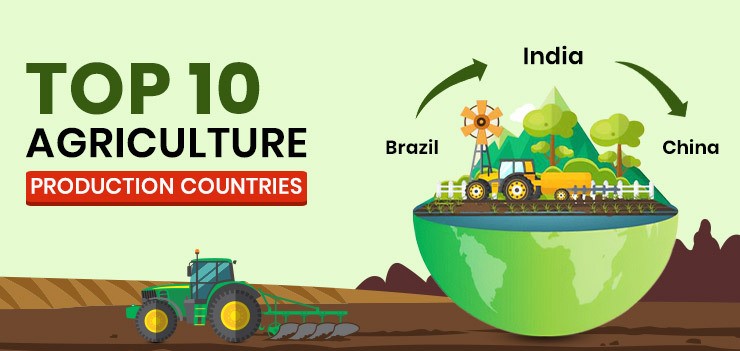
Highest agricultural land in world, what leaks our productivity
- November 28, 2023
- 0
India does not have a shortage of agricultural land. According to a map released by the US Geological Survey (USGS), India has 179.8 million hectares of agricultural land, which is the highest in the world. In comparison, the United States has 167.8 million hectares, and China has 165.2 million hectares.
In India, 86% of farmers have less than two hectares of land. They collectively own 47.3% of the agricultural land. Farmers with 2 to 10 hectares of land make up 13.2% of the total and own 43.6% of the agricultural land. In contrast, in China, the average size of landholding is only 0.6 hectares.
When we compare India’s agricultural productivity to China, it becomes baseless that India’s small landholders are one of the reasons why agriculture is considered an informal profession in the country. India’s agricultural output is valued at $407 billion, whereas China’s is more than three times that amount, at $1,367 billion.
In China, wheat production per hectare is 5810 kilograms, whereas in India, it is only 3500 kilograms. China achieves a higher combined growth rate of land and labor productivity for wheat and rice, at 3.75% and 5.21%, respectively, whereas during the same period, India rates on 2.44% and 2.96%.
These days, we often hear discussions about crops like millet and pulses, even though India’s production of these crops is much lower than China’s. India’s production of millet and pulses for example, is 1,591 and 699 kilograms, compared to China’s 5,470 and 1,533 kilograms, respectively. Although rural farming populations are higher in both India and China, better policies in China result in significantly higher yields. Despite being the country with the most agricultural land in the world, India struggles with displacement, farmer suicides, and poverty, along with higher production costs.
India believes that corporate farming will increase productivity because it will provide larger plots of land to farmers. In contrast, China’s smaller landholders manage to achieve three times higher production, thanks to cooperative farming.
It’s worth noting that India has a higher consumption of fertilizers compared to China. We need to understand that China’s higher agricultural productivity is due to scientific farming, where minimal water and fertilizers are used efficiently. They also have systems like Agricultural Produce Market Committees (APMCs) for effective marketing.
Our problem is that we need a comprehensive approach that links agricultural universities, farmers, and markets with consumers. Instead of focusing on corporatization, we should concentrate on cooperatives. We need to identify farming groups that are capable of achieving superior yields at affordable rates.
It’s strange that in India, taxes are imposed on agricultural expenses, and then subsidies are provided. Moreover, agricultural science centers need to be strengthened. We need more agricultural graduates instead of engineers. Improvements should also be made in irrigation, seed, and soil management.
We should look at how farmers in Punjab are shifting to crops other than rice. We need to emphasize the cultivation of drought-resistant crops and use water cautiously. Success stories like ITC and Amul should be examples for us. Empowering MSPs (Minimum Support Prices) and strengthening mandis (marketplaces) for all crops are also necessary.


































































